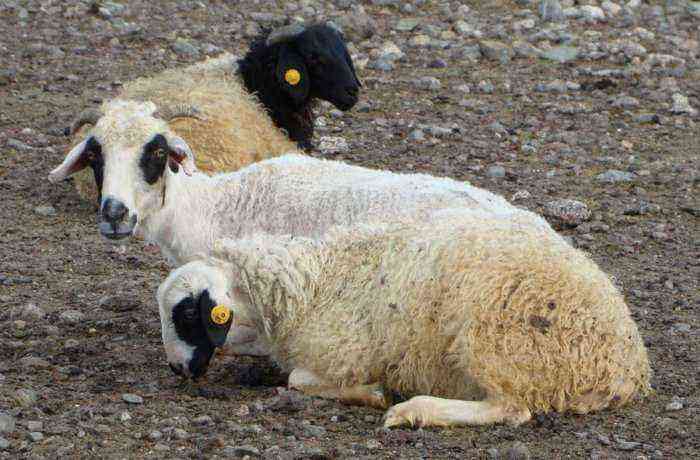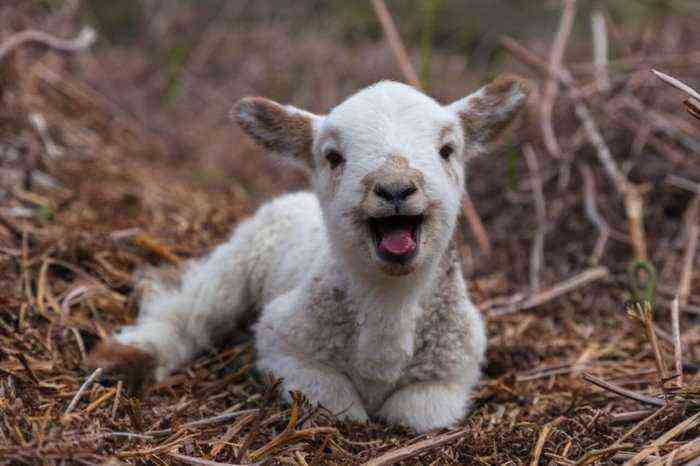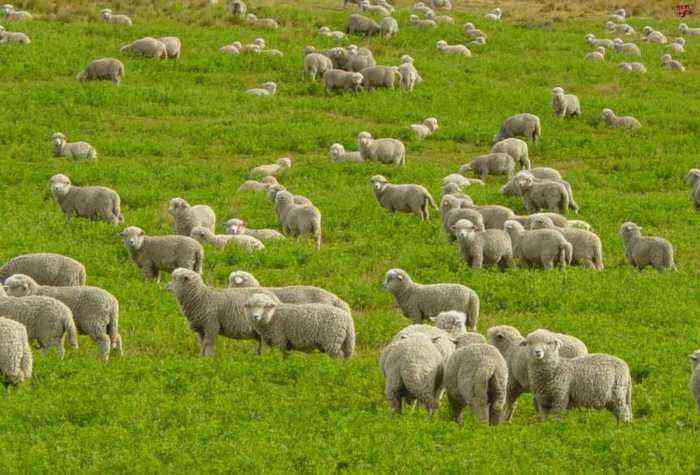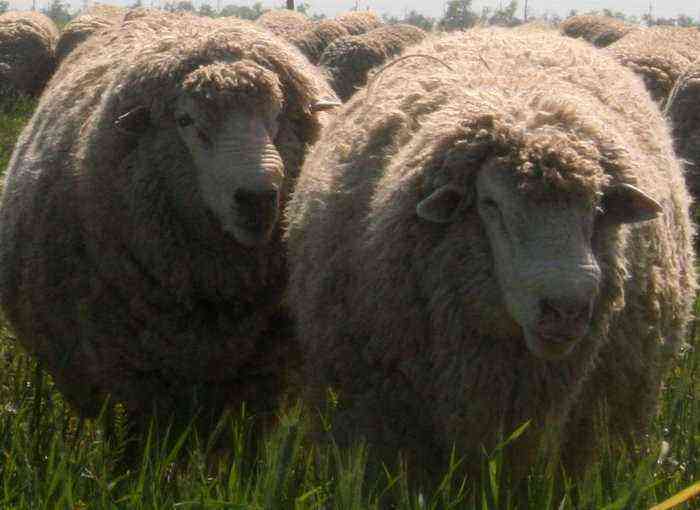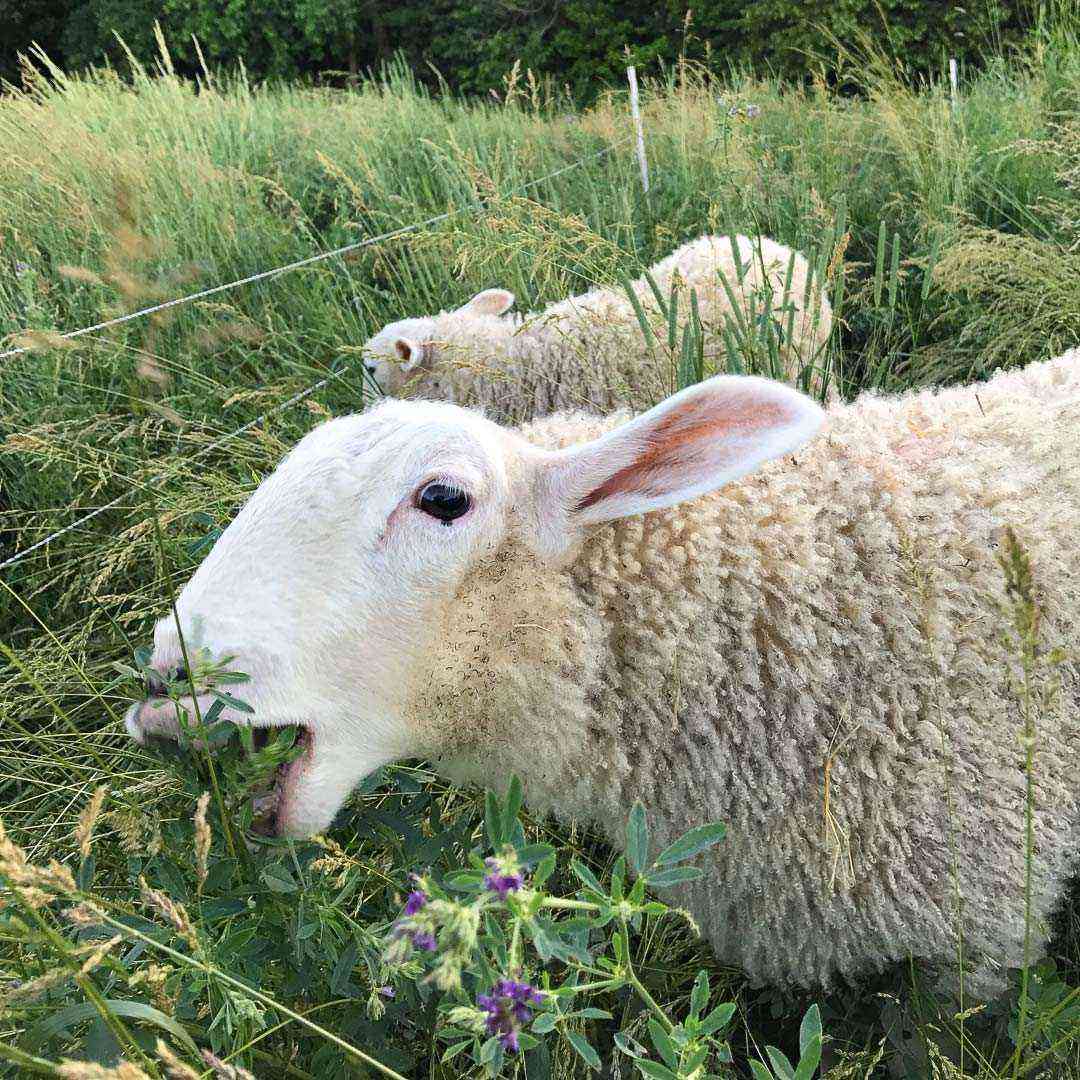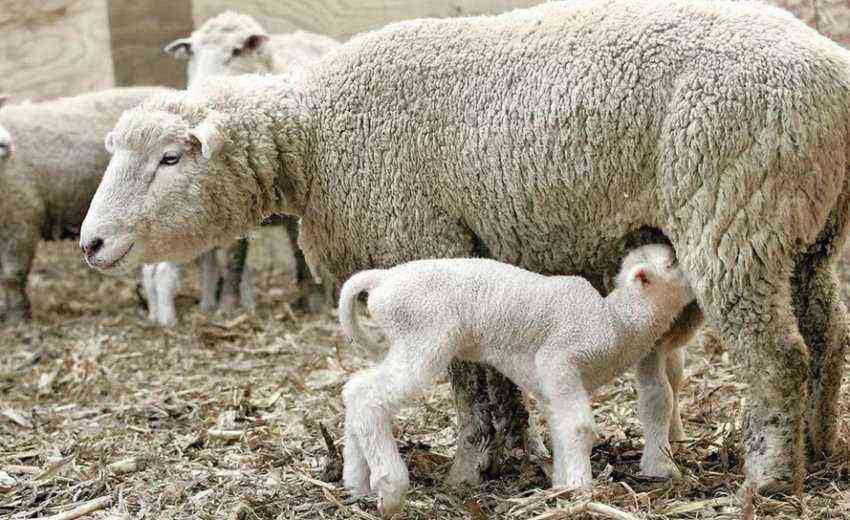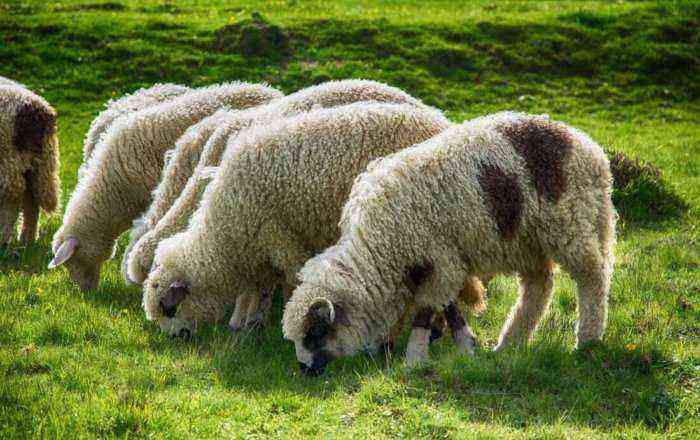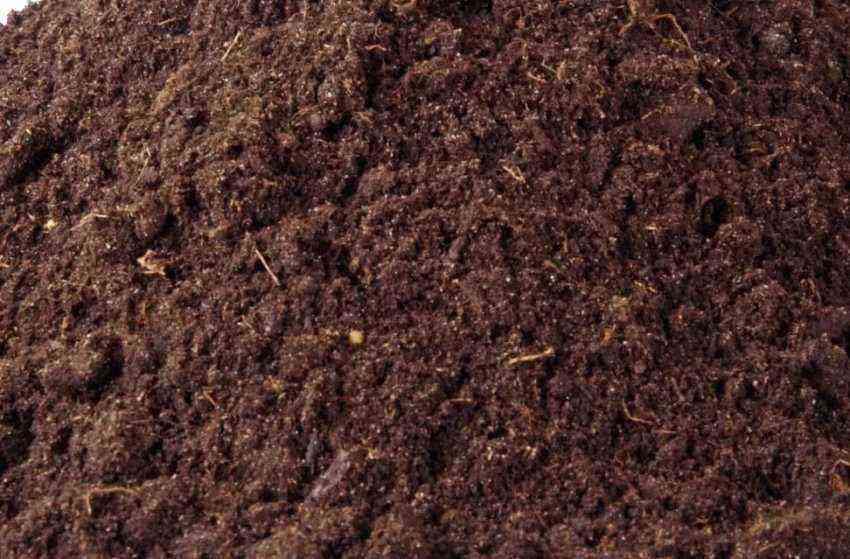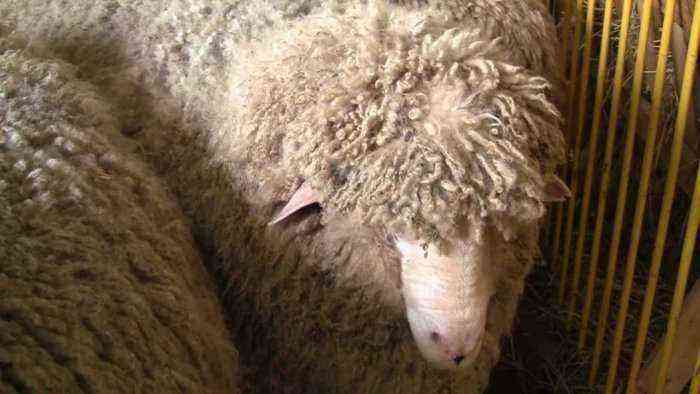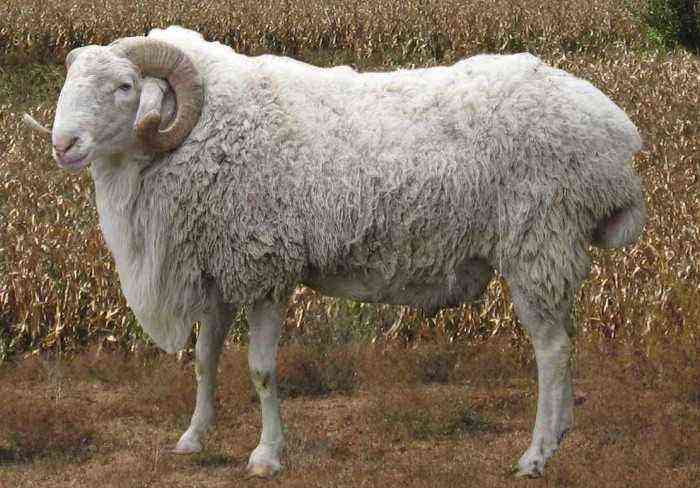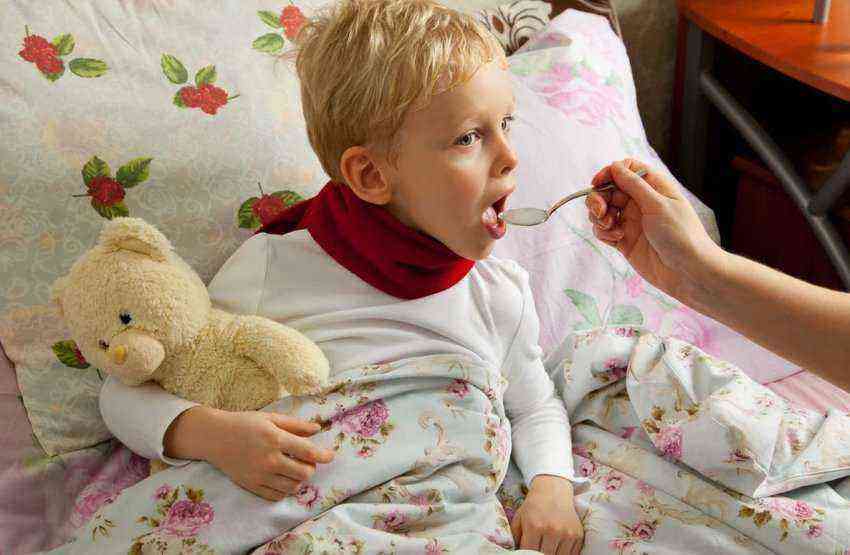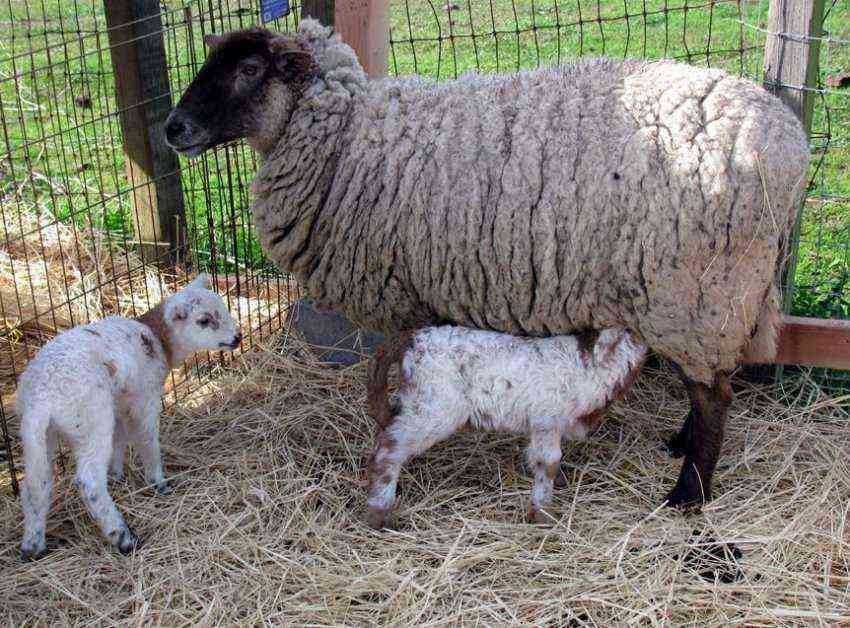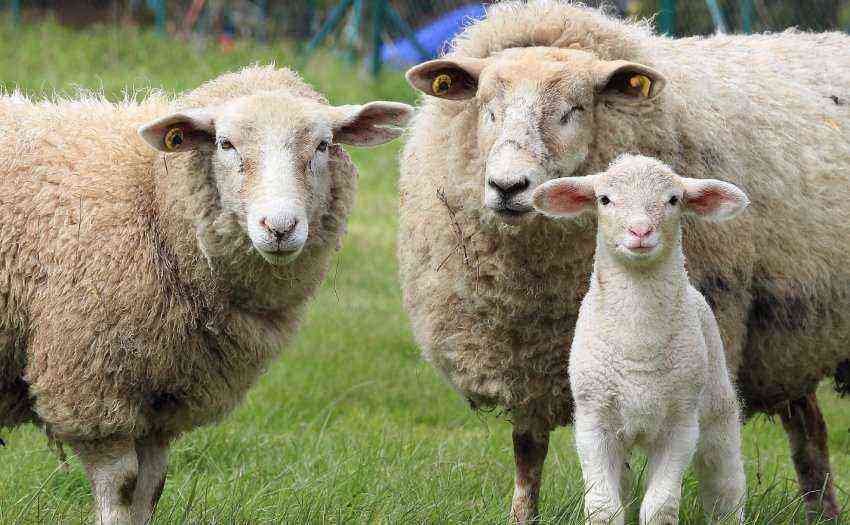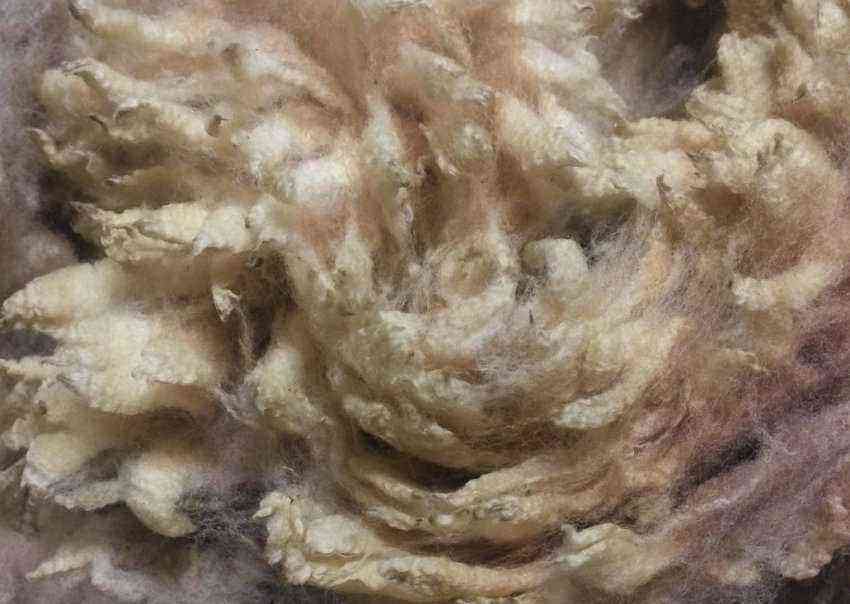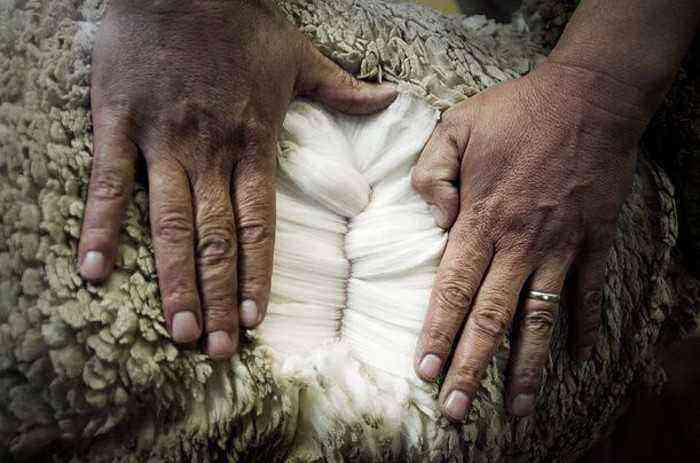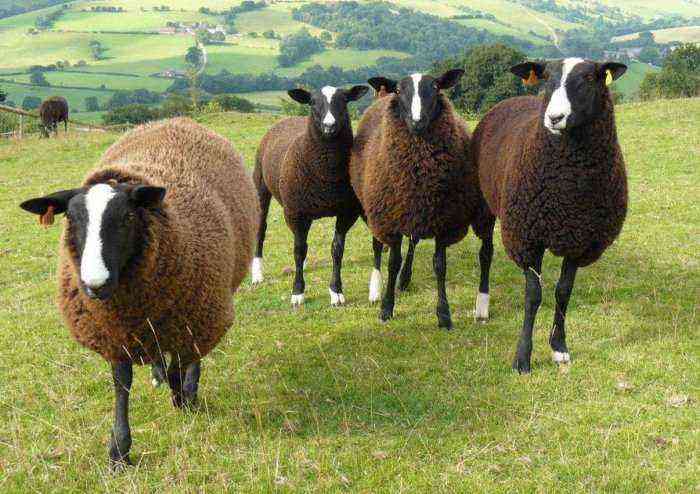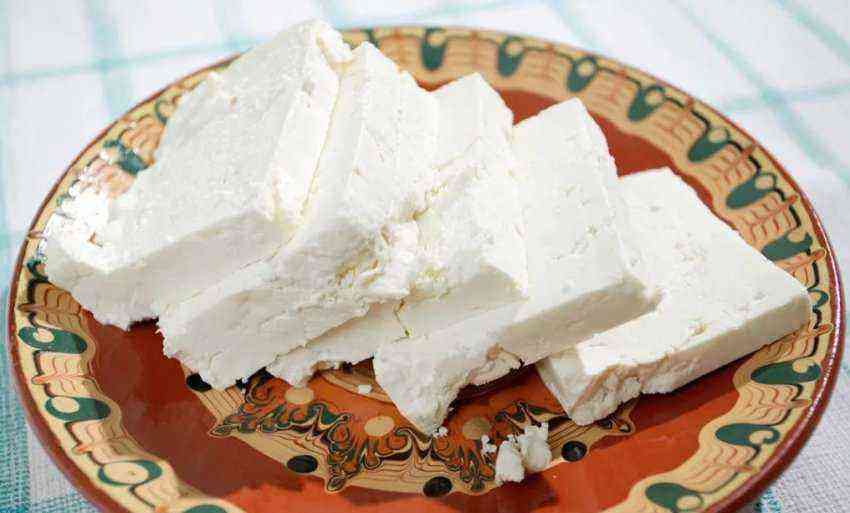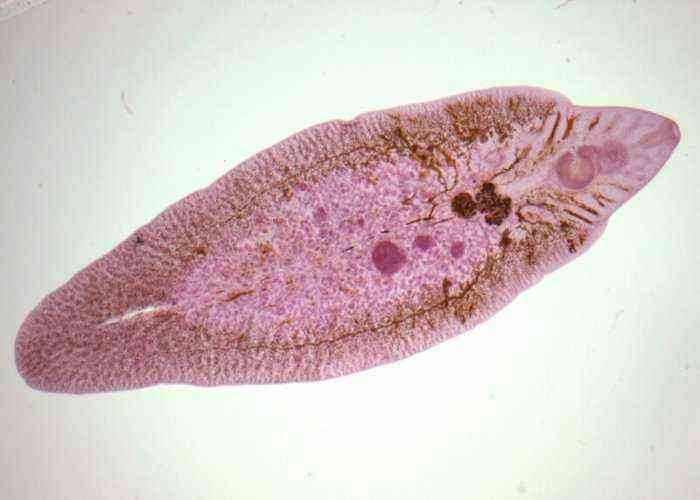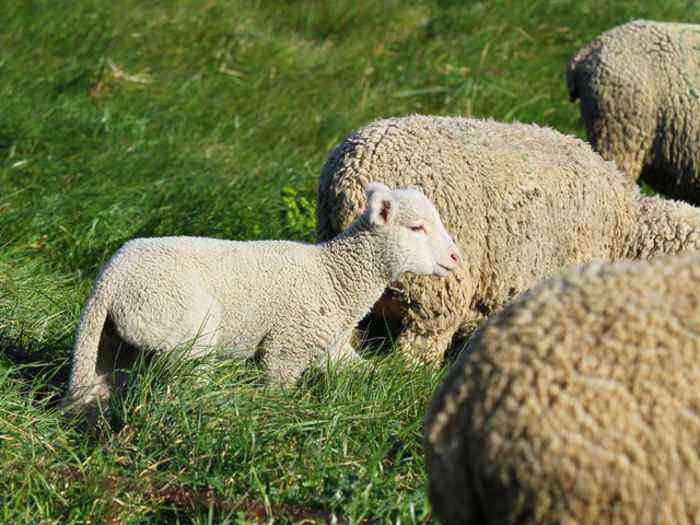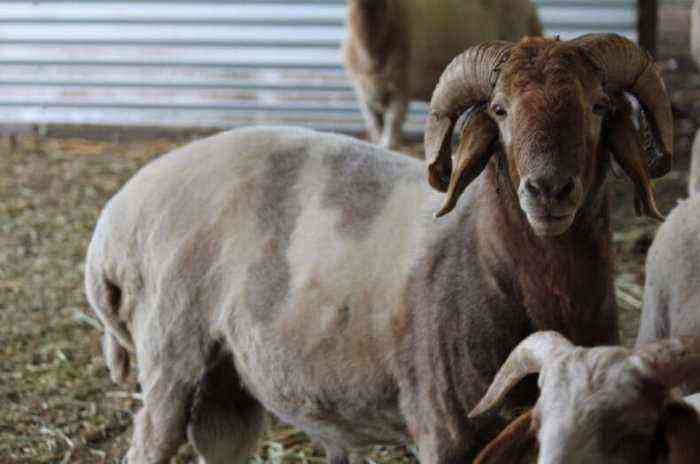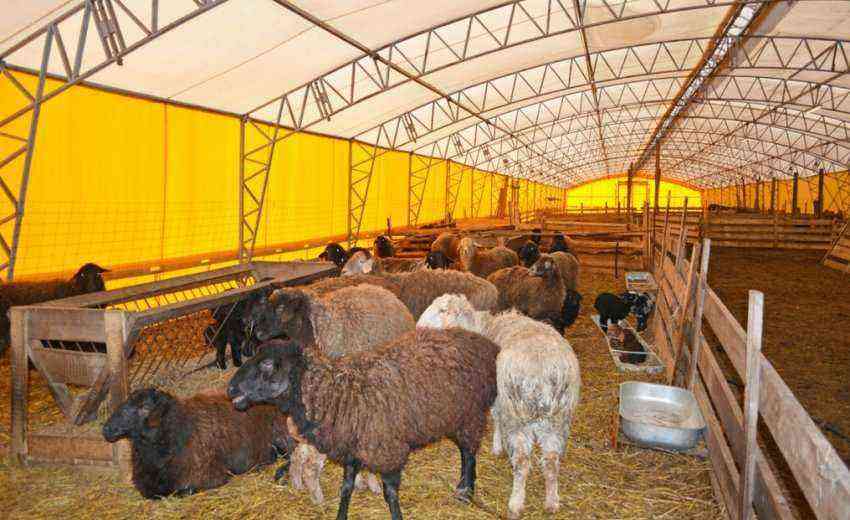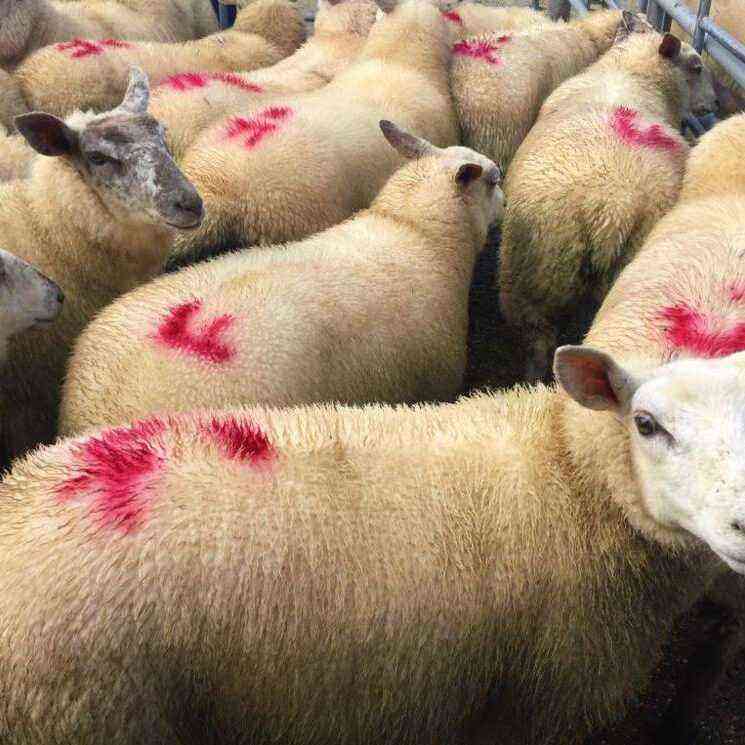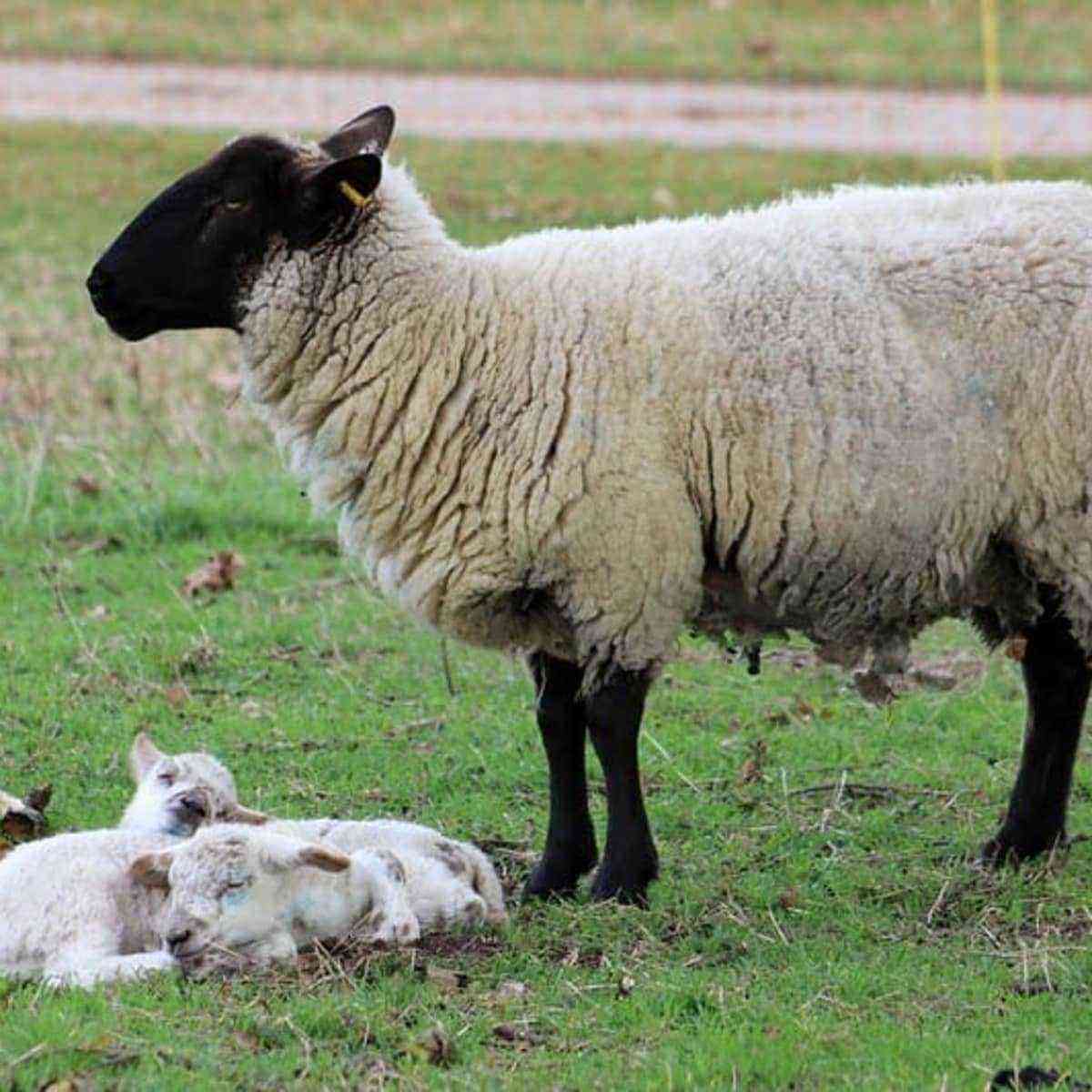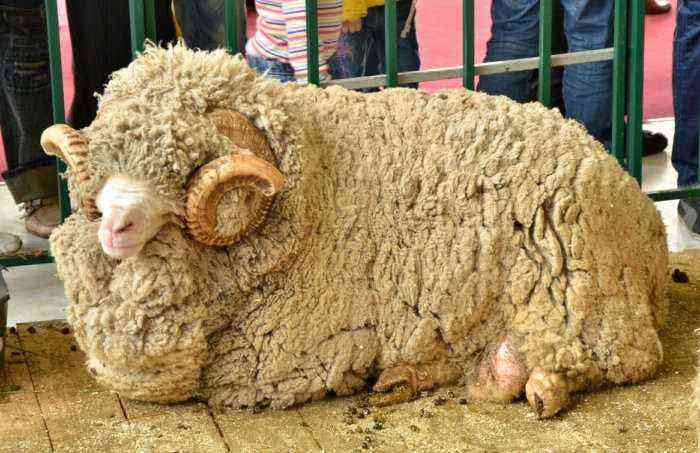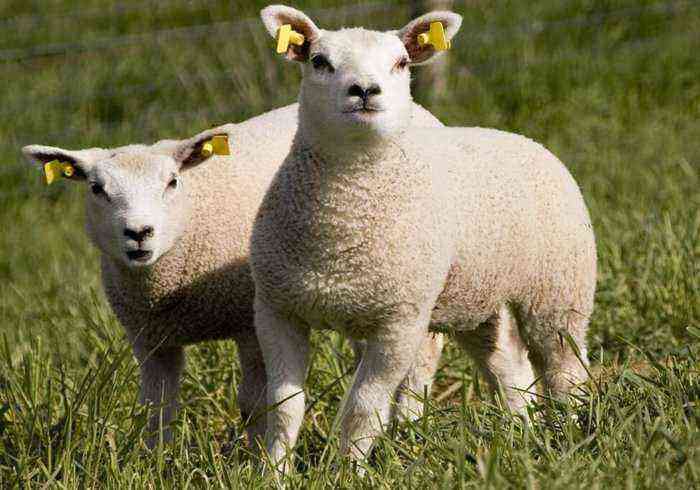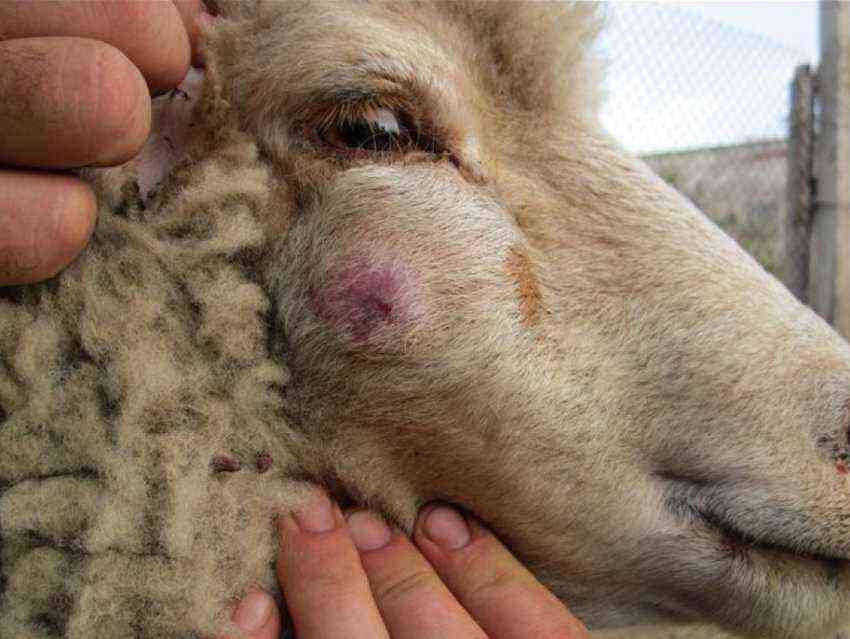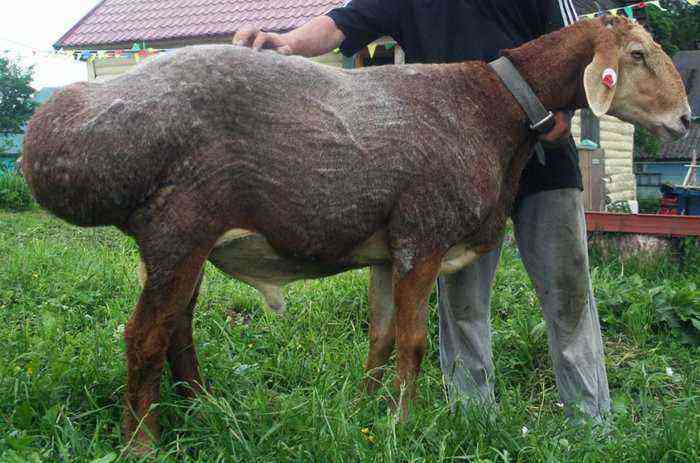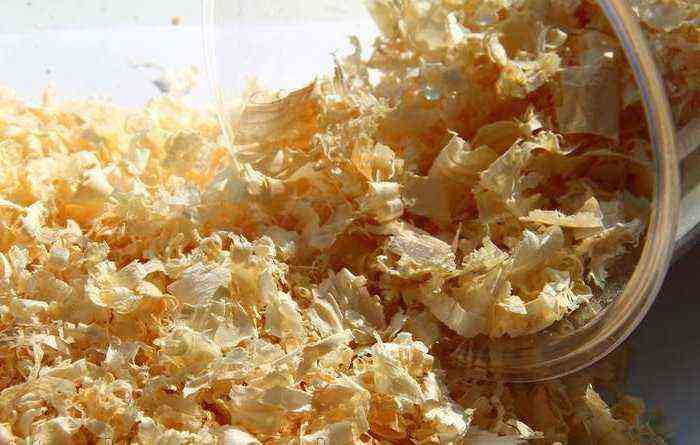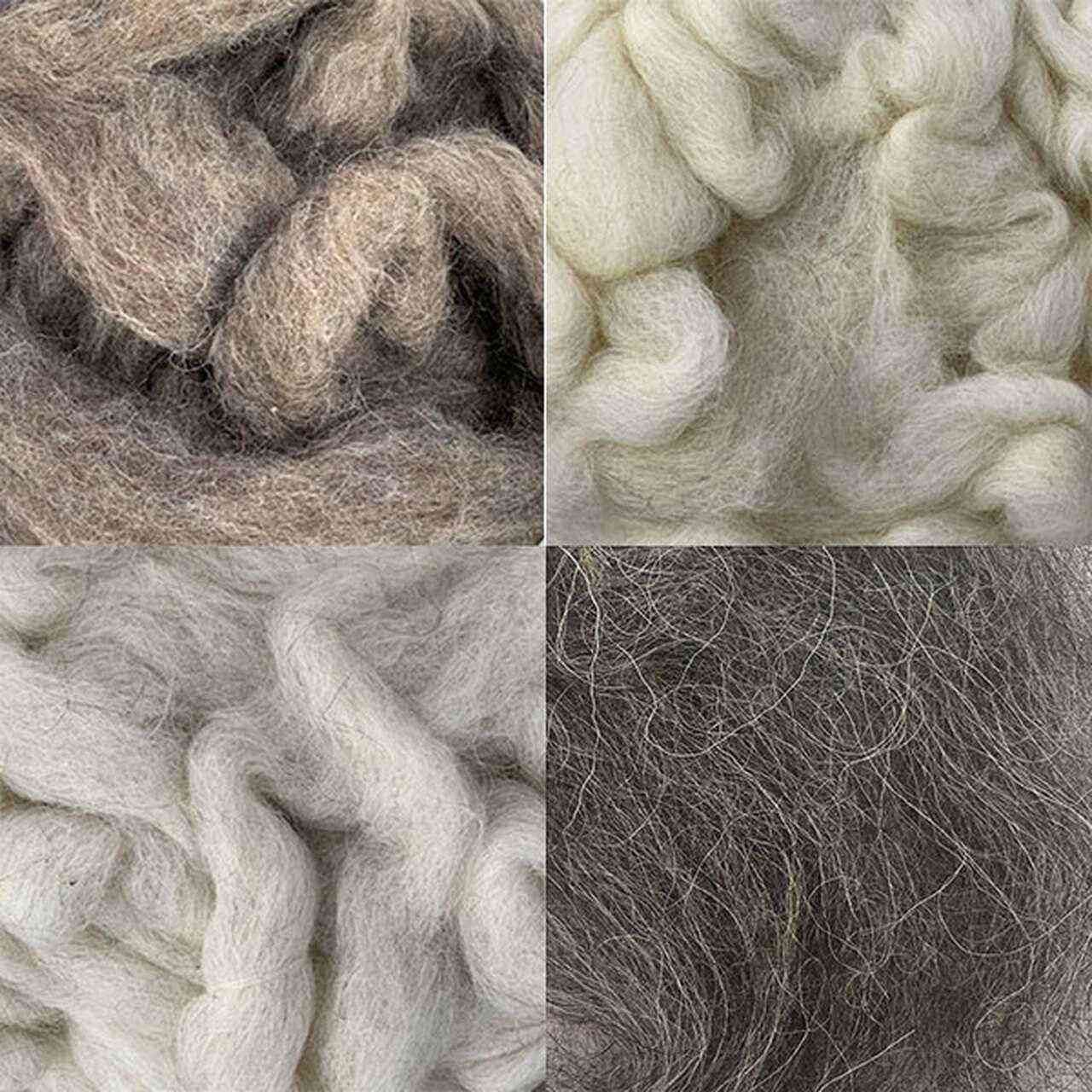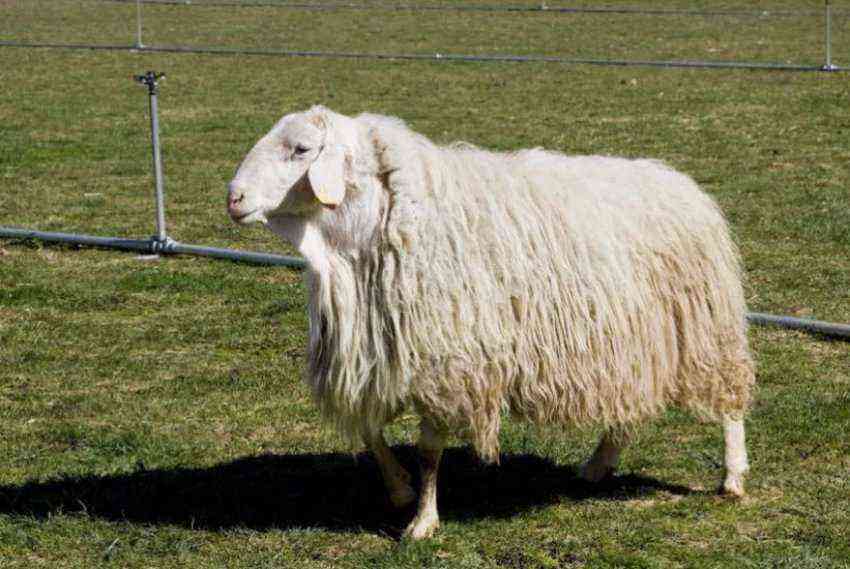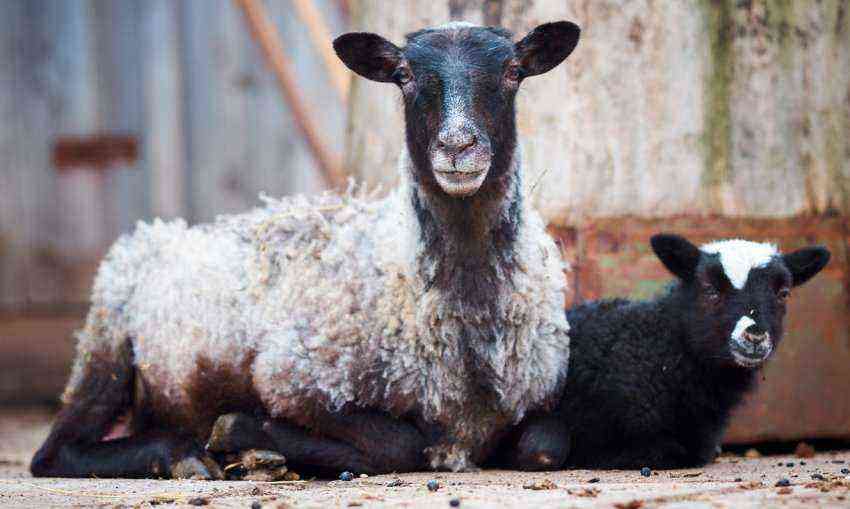In sheep breeding, as in any other type of livestock breeding, the most difficult moment is raising young animals. All the nuances are important here – helping the uterus during pregnancy and lambing, proper feeding of the newborn, proper control of the lamb in the process of its growth, the ability to identify the cause and first signs of the baby’s illness in order to start treating him in time, etc. Let’s talk in more detail about everything this and much more that is associated with the breeding of lambs in a small household.
Breeding lambs at home: features
Keeping sheep can be a very profitable activity, provided it is organized correctly. There are several reasons for this.
First of all, it should be noted that we are talking about animals with fairly strong immunity, which, unlike some types of poultry or, say, rabbits, get sick quite rarely.
Sheep are very unpretentious in nutrition, moreover, they can easily feed themselves on their own, grazing on the pasture during the warm season, and sometimes all year round (winter grazing is a relatively new, but already very well-established direction in cattle breeding, which allows the farmer significantly reduce the cost of maintaining the herd).
Did you know? On Novy Arbat in Moscow, 4 years ago, a very expensive and prestigious establishment called “Shepherd House” was opened, combining a butcher’s shop and a restaurant. Here you can buy or taste exquisite marble lamb from Kalmykia, obtained from animals that are on a year-round free pasture.
The productivity of sheep is very high, although its specific indicators largely depend on the breed.
Finally, the sheep is a source of a number of valuable products, namely:
In addition, the owner of purebred breeding individuals can make quite a lot of money selling sperm or mating (fertilizing sheep owned by other farmers).
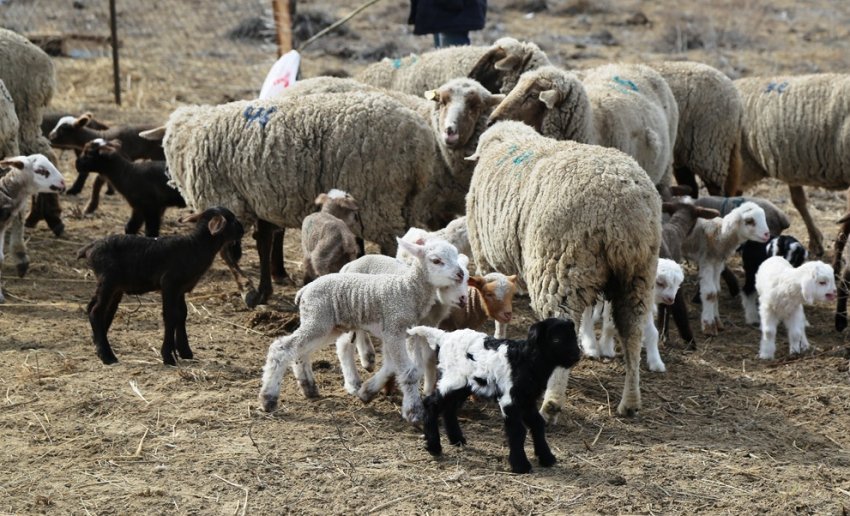
lambing sheep
During the year, a sheep can bring two offspring, although in order for the animal’s body not to be depleted prematurely, it is better to reduce this number to one lambing. Start using a female for breeding should be at the age of 16 monthswhen it has almost completely reached the dimensions inherent in a particular breed. Under this condition, the likelihood that lambs will be born with a small weight and poor health is much less.
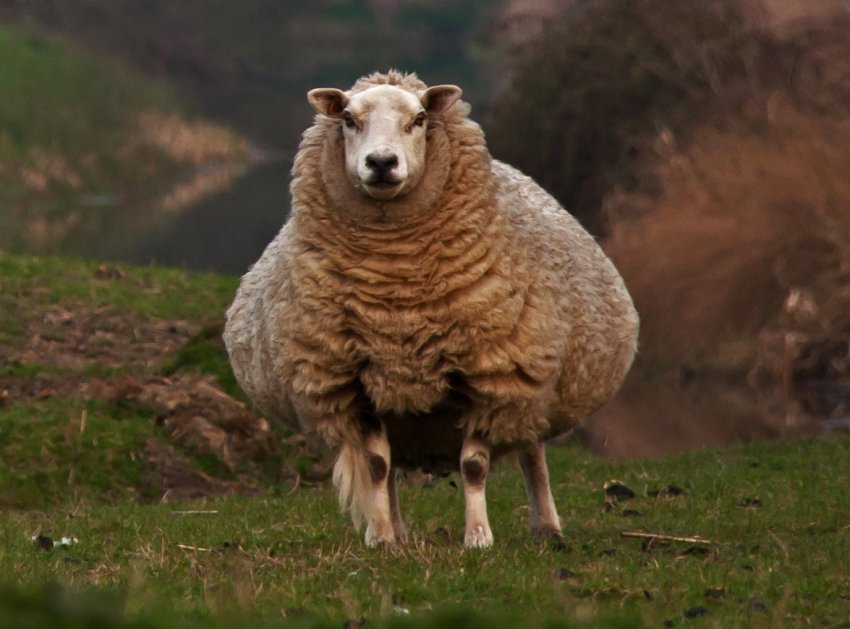 The gestation period in sheep lasts from 140 to 155 days, depending on the age of the animal, the breed and the number of lambs (usually there are from one to five).
The gestation period in sheep lasts from 140 to 155 days, depending on the age of the animal, the breed and the number of lambs (usually there are from one to five).
It is usually not necessary to help the mother during childbirth (the only exception may be the first lambing), however, in order to avoid any problems with the newborn, it is desirable to control the birth process.
Helping a lamb with lambing
If pregnancy and childbirth proceed normally, the lamb is born following the amniotic sac, moving along the birth canal with its front legs on which the head lies. In the process of falling, the fetus tears the umbilical cord, and if this does not happen, the mother gnaws it herself.
Important! It is impossible, trying to facilitate childbirth, to pierce the amniotic sac. The effect will be the opposite: the bladder pushes the birth canal apart, thereby helping the fetus to move along them.
After lambing, the female rises, approaches the baby and licks it, clearing it of amniotic fluid and mucus. Having memorized the smell of her own lambs, the sheep then more easily let them near the udder, and therefore the best thing a farmer can do is to observe the process and not interfere with it.
There are only a few situations in which a lamb needs help:
warning sign
What to do
Incorrect presentation of the fetus (hind legs forward) The best option is to contact the veterinarian, he will be able to turn the fetus before delivery. Finding the lamb inside the bladder. umbilical cord with sterile scissors at a height of 8–10 cm, lubricate the cut with iodine The lamb does not breathe Clean the nasal passage and oral cavity of the newborn from mucus, if necessary, blow air into the mouth
The final stage is wiping the lamb with a dry and clean towel or rag.
First hours after birth
If the lamb was born healthy, about 30 minutes after birth, he begins to stand up on his own and try to look for the udder. It is very important to make sure that the mother licked the baby: if this did not happen, the sheep obviously did not accept the cub and will not care for him.
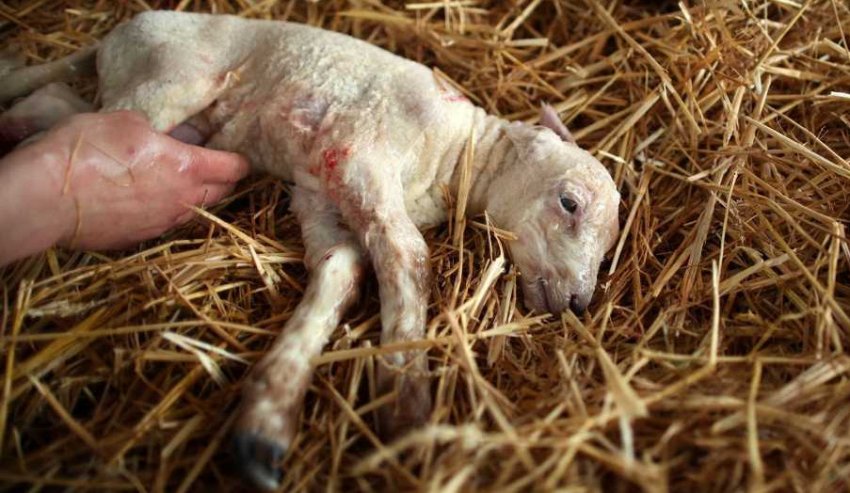 Before the baby finds the udder and starts to eat, you need to milk some colostrum, since dangerous microflora is often present in its first portion.
Before the baby finds the udder and starts to eat, you need to milk some colostrum, since dangerous microflora is often present in its first portion.
It is also worth helping the lamb to take the first sips, lightly supporting him by the head. So the baby will very quickly find the correct position and in the future will eat on its own.
Feeding the lambs
At the initial stage of their life, newborn lambs only eat and sleep, and their diet consists exclusively of milk. Subsequently, the diet of young animals gradually becomes more and more diverse, but their growth and further development largely depend on how correctly the farmer feeds the babies.
newborns
Exclusively mother’s milk is the food of the lamb from the 1st to the 28th day after birth. First, the baby is applied to the udder with an interval of 3-4 hours, then the intervals between feedings gradually increase.
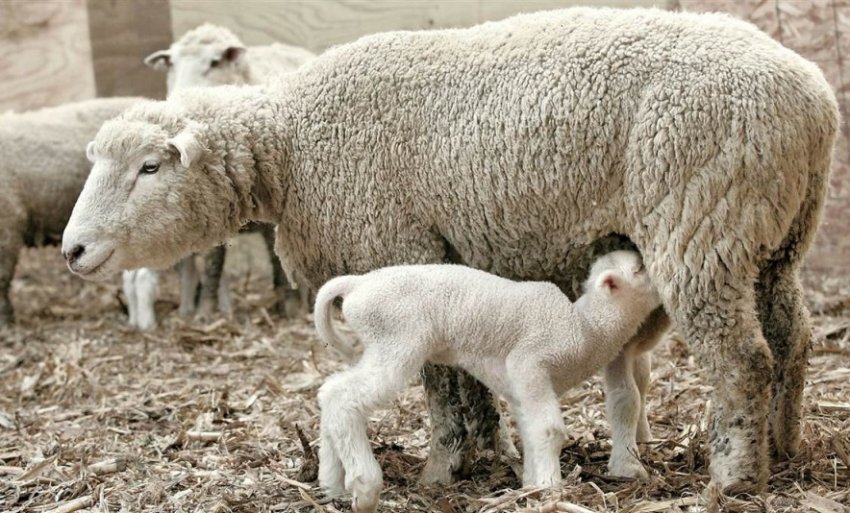
If the litter is kept with the mother, it is impossible to determine the amount of milk drunk by each lamb, however evidence that the baby is not starving is the following signs:
- most of the time the cub sleeps, waking up only to reach for the udder;
- feeding passes and ends calmly (hungry lambs suck continuously and nervously, their legs tremble and buckle);
- the newborn quickly gains body weight (the normal daily increase during the first 7 days is usually 250-350 g, then this figure increases to 350-500 g).
Important! Each kilogram of live weight of a lamb “costs” a mother five liters of milk.
Thus, a lamb born with a weight of 3,5–5,5 kg should weigh 13–18 kg in a month, and upon reaching the age of three months, 30–40 kg.
grown up
When the babies are a month old, they begin to supplement. First, it is best to gradually introduce mixed (in a ratio of 2: 1) oatmeal into the diet (previously filled with hot water, settled until swelling and then squeezed out) and boiled cake. Then, in the same mixture, the proportion of oatmeal is gradually reduced until the proportion changes to 1: 5 (by the age of two months).
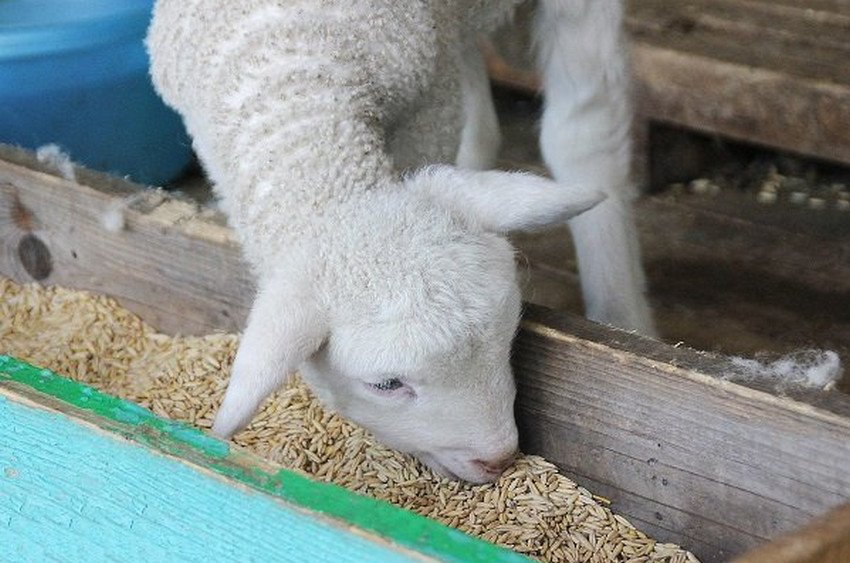
In parallel, kids can get some fresh hay harvested from meadow herbs, as well as finely chopped root crops. A variety of diet is carried out at the expense of concentrates. Their number is determined according to the following standards:
Age in days
Daily rate of concentrate, g
30–60
50
60–90
100
90–120
150
120–160
250
Artificial feeding
Mother’s milk is the ideal food for the baby of any mammal, since it optimally combines all the nutrients necessary for the development of this species. However, if for some reason this method of feeding is not possible, it is possible to feed a newborn by artificial means.
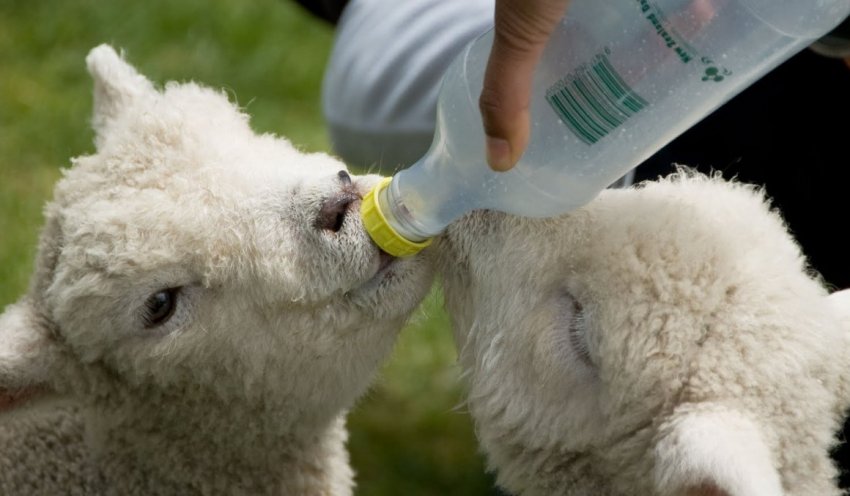
What to feed
A common substitute for sheep’s milk is cow’s or goat’s. His babies are given in accordance with the following standards:
Age in weeks
One-time rate, g
Number of feedings per day
1
145
6-7
2
200
5
3–5
380
4
6–7
350
3
The decrease in a single portion of milk, starting from the 2nd month of life, is explained by the fact that from this age complementary foods begin to be introduced into the diet of lambs. This should be done gradually, guided by the same rules as when raising lambs on mother’s milk.
Important! Regardless of the method of feeding, during the first 48 hours of life, the lamb must, at least once, receive sheep colostrum – this will start the immune system and ensure normal growth for the animal. If there is no other, recently lambed, sheep on the farm, such colostrum can be bought from neighbors.
Features
Artificial feeding of lambs is a laborious process, but, having mastered its basic rules, even a novice farmer can handle it. The main thing to remember:
- A lamb kept separately from its mother should be kept warm, clean and dry.
- Newborn lambs are fed from a bottle equipped with a nipple. In this case, all utensils must be treated with boiling water before use.
- With artificial feeding, it is important to strictly adhere to the feeding regimen and not to exceed the recommended portion.
- Starting from the 12th day of life, a baby can be taught to drink milk from a bowl, and it is no longer necessary to carefully sterilize it, just wash it well.

Planting a lamb under someone else’s womb
Another way to feed a baby left without a mother is to place him under another, recently lambed, sheep. The problem is that animals are reluctant to accept other people’s children, so farmers are forced to resort to various tricks:
- Lubrication of lamb wool with amniotic fluidobtained from a freshly lambed sheep, or wrapped in placenta. Feeling the “native” smell, the female licks the baby and then perceives it as her own.
- Bathing lambs togetherborn from different mothers, in salt water. After bathing, it is advisable to rub the babies well against each other to “mix” the smells. By licking her baby, a sheep can do the same with a stranger, thereby accepting him.
- Skinning a stillborn lamb (before the mother licks it) and wrapping another cub in its skin. The method is quite cruel and not very reliable: sometimes the skin has to be left in the okarka for up to 7 days.
- Fixing the ewe in one place with a rigid leashso that she can neither see nor smell the lambs sucking from her udder. In this case, the animal must be able to freely stand up and lie down. This “torment” lasts 4-5 days, after which the uterus usually accepts strangers.
How to properly tag a lamb
Animals used for breeding are usually marked. You can do this from the age of three. The information contained on the tag (brand) will help to clearly identify the animal, and, if necessary, its owner.
Clip
The most common and, at the same time, humane way of branding (branding) livestock is the use of special tags that are inserted into the animal’s ear in the form of a fixed clip. All the necessary information is pre-printed on the tag: this can be done with a regular marker or digital (laser) way, without damaging or erasing data.

Modern tags are made of plastic (used to be metal clips). Their installation takes place using a special clipper. Everything happens easily, quickly and painlessly, subsequently the animal also does not experience any discomfort due to the presence of a clip on the auricle.
other methods
In addition to clips, sheep branding is still done by methods such as:
- burning marks on the skin;
- plucks on the ears;
- tattoo;
- burning information on the horns.
Did you know? The first kind of “living product” that began to be branded, no matter how scary it sounded, were people. In addition to slaves, criminals used to receive a special mark on the body – in this way they were forever separated from “honest citizens”.
All of the above methods of identification are being replaced by chipping, which is likely to soon replace even quite humane ear clips. An electronic chip containing all the necessary information is inserted under the skin of the animal., which is simultaneously entered into the official database. In the future, with the help of a special device, you can always read information from the chip, but you cannot replace or fake such data.

Selection of lamb
The formation of the parent herd is a very important task for any farmer, especially when it comes to animals of a rare and expensive breed. It is clear that for breeding (selection) the best specimens among young animals should be selected, which means that you need to be able to correctly distinguish high-quality breeding material.
per tribe
The first inspection of the offspring is carried out at the age of 10-15 days. Individuals are selected for breeding that meet the following criteria:
- correct body proportions;
- maximum weight gain (indicates good health);
- strong physique.
At the time of separation of the young from the uterus, a second selection is carried out using the same criteria. Then the animals undergo two more checks – at the age of one year and two years.
Important! Evaluation of an animal by conformation, performance indicators and body type for its use in breeding programs is called grading. According to its results, the selected individual usually receives one of three possible classes – elite, first or second.
In addition to good health, ideal build, length and quality of wool, fertility and productivity (for ewes, such an indicator as milk production is necessarily taken into account, because a breeding female must feed her cubs), in the process of grading, special criteria specific to a particular breed are also used, for example:
- the degree of overgrown with fleece;
- rune quality (sometimes special laboratory tests are carried out for this);
- wrinkling of the skin;
- the absence of colored fibers (white sheep’s wool is considered the most valuable).
 Even an individual ideally corresponding to all evaluation criteria can produce poor offspring. This means that the external signs manifested in the animal do not have sufficient hereditary fixation. Therefore, breeding selection is a long process and involves constant adjustment of the results.
Even an individual ideally corresponding to all evaluation criteria can produce poor offspring. This means that the external signs manifested in the animal do not have sufficient hereditary fixation. Therefore, breeding selection is a long process and involves constant adjustment of the results.
For meat
All lambs that have not passed grading (culled) are used for fattening and subsequent slaughter for meat. Usually rams are slaughtered at 8-9 months. It is this age that provides the perfect combination of tasty tender meat with minimal fattening costs. With further maturation, the animal gains a little weight, but this increase is not significant, but the quality of the meat is gradually decreasing, and thus the additional costs for keeping young animals do not justify themselves.
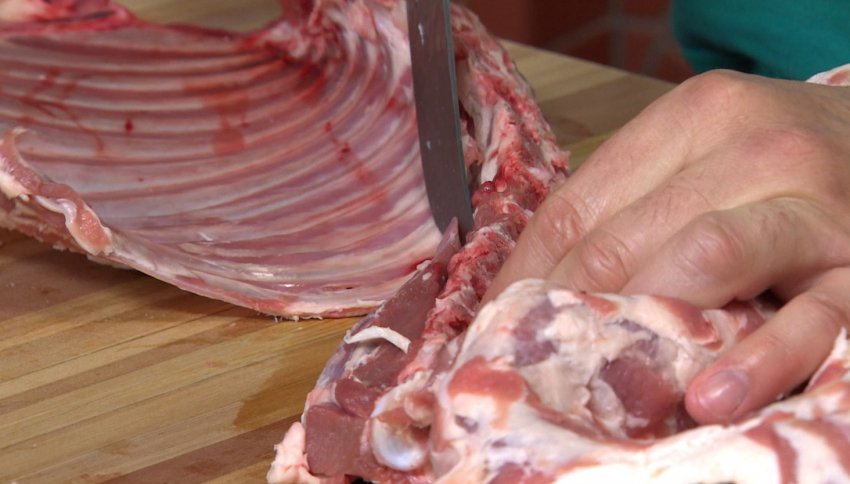
Vaccinations and disease prevention
In addition to ensuring the correct diet, caring for lambs involves mandatory monitoring of the health of young animals. At the same time, the best way to prevent the most dangerous diseases, especially those for which there is no adequate and effective treatment, is prevention. And the most reliable method of prevention is, as you know, vaccination.
Immunizations
There is no mandatory vaccination schedule for lambs. Responsible farmers vaccinate young animals at the age of 3-4 days against Clostridium, Bradzot, Listeriosis. There are vaccinations against dysentery, but they are usually carried out only in those regions where outbreaks of this dangerous disease have been observed. At the same time, not offspring, but pregnant females are subjected to such a procedure. Manipulation is performed twice – 3-4 weeks before lambing and 10 days after receiving the first vaccine. In this way, both the ewe and her offspring receive immunity against a deadly disease.
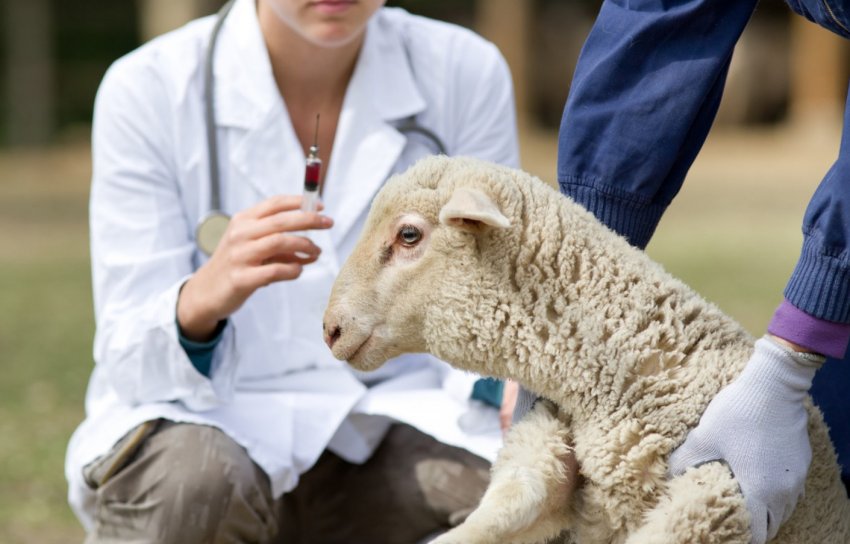
Rabies vaccination is another procedure that is carried out at the request of the farmer. There is no cure for a dangerous disease, the probability of death is almost 100%, therefore, before the exhibitions or in case of detection of a focus of rabies in the region where the farm is located, preventive measures will not interfere.
The most common diseases of lambs
Among the most common diseases among lambs, mention should be made of:
Name of the disease
Symptoms
Treatment
Bradzot Intestinal poisoning (bacterial nature) In theory – antibiotics, in practice – quarantine and isolation of sick individuals (mortality 100%) Smallpox Hair loss, blisters on the skin, lethargy Broad-spectrum antibiotics Listeriosis Cramps, muscle spasms, exhaustion No effective treatment Hyperplasia lungs, pneumonia Cough, shortness of breath, difficulty breathing Antibiotics White muscle disease Cramps, muscle spasms, respiratory failure, lameness There is no effective treatment Paronychia (hoof rot) Unsteady gait, incoordination Local disinfectant procedures Fascioliasis Diarrhea, dehydration, weakness Anthelmintics Pyroplasmosis Diarrhea, emaciation, yellow plaque on the skin and mucous membranes Antiparasitic drugs (Azedin, Berenil, Flavacridine) Echinococcosis Rapid breathing, diarrhea, emaciation Antiparasitic drugs, antibiotics
Walks and care
Lambs raised for slaughter by the stall method are usually not walked. However, for the full development of the animal, walks are necessary, therefore, individuals selected for breeding should definitely graze in the fresh air.
In the process of such walking, sheep not only get fresh green food for themselves, but also actively move, and this ensures proper digestion.. Sheep constantly in the stall quickly become weak, as a result, males lose productivity, and females have a hard time with pregnancy and often experience complications during the lambing period.
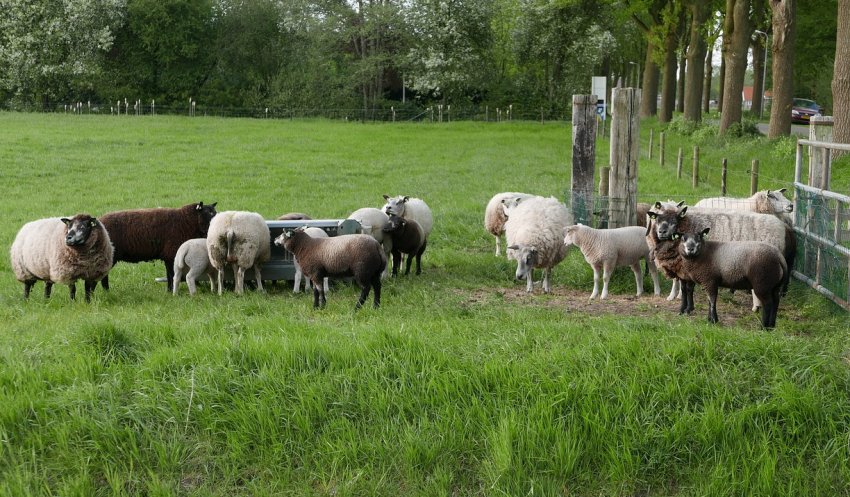 In the place where the herd is grazing, drinking bowls must be provided, as well as protective shelters where sheep can hide from the heat or wait out the rain
In the place where the herd is grazing, drinking bowls must be provided, as well as protective shelters where sheep can hide from the heat or wait out the rain
Otherwise, caring for young animals requires compliance with standard sanitary standards, first of all, the farmer is required to ensure dryness and cleanliness in the sheepfold. Among the mandatory procedures, regular deworming should be mentioned, which ensures the protection of young animals from parasites that often attack them.
At about 6 months of age, lambs are sheared for the first time.. This procedure promotes faster hair growth and good weight gain. In addition, during the first six months of life, lambs hardly wear out their hooves and often experience difficulties from their disproportionately large size. Therefore, immediately after separation from the uterus, it is customary for young animals to cut the hooves.
Video: Sheep hoof trimming
Caring for weak lambs
Sheep are strong and hardy animals, but sometimes as a result of improper care, illness or hereditary disorders, lambs experience weakness, poor appetite, and lack of weight gain. Such animals require more careful care and the adoption of some specific measures – depending on the specific problem.
If he falls to his feet
Lameness, problems with walking and poor coordination of movements that occur in young animals may indicate the development of a dangerous disease in the animal’s body (for example, the white muscle disease mentioned above). In this case it is important to urgently seek advice from a veterinarian and determine the exact diagnosis, which will allow you to develop an algorithm for subsequent actions.
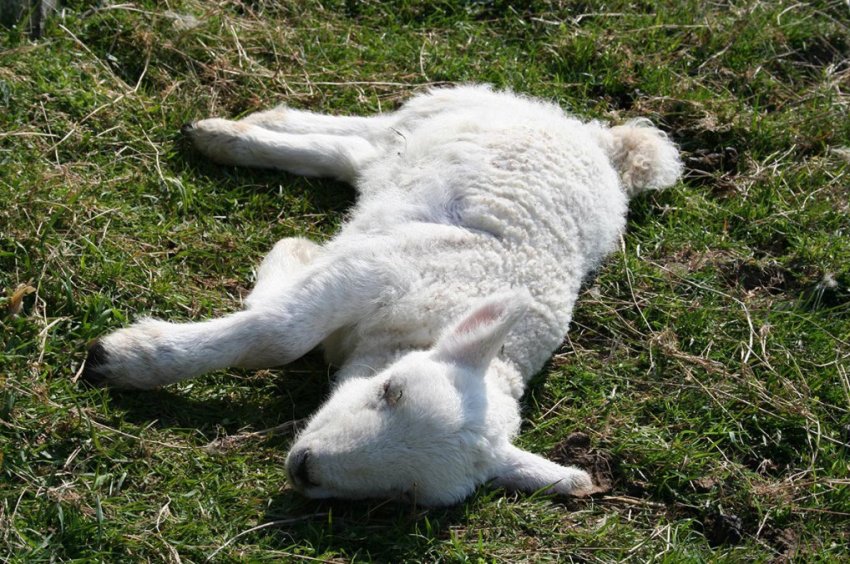
However, if a newborn lamb from the first hours of its life begins to fall with every attempt to stand up, or cannot take a few steps without twisting its leg or falling, it is most likely not an infection.
Weak lambs can be born as a result of:
- malnutrition of the ewe during pregnancy;
- too early mating or frequent lambing (exhaustion of the mother’s body);
- prematurity;
- difficult childbirth;
- birth stress;
- poor heredity (for example, inbreeding);
- lambing in a too cold room (most often lambs born in winter do not stand well on their feet);
- micronutrient deficiencies, etc.
Did you know? Sheep, on average, live 10-12 years, but there are also records. So, in 1988, a case of successful lambing by a ewes at the age of 28 was recorded on the British farm Doklettvir Hall.
You can help your baby in the first days of his life with the help of:
- pacifier feeding (if the newborn is not able to suck independently);
- covering the lamb’s eyes while feeding (it has been established that the sucking instinct “turns on” in the dark);
- warming procedures (warmers, insulated nest, etc.);
- drug injectionscontaining tocopherol and selenium (for example, “E-selenium”), since usually a deficiency of these substances provokes muscle dystrophy;
- injections of 5% glucose (0,5 cm³) to prevent hypoglycemia and give the weakened body a dose of “fast” energy.

Doesn’t gain weight
Weight gain is the main indicator that allows you to evaluate the development of the lamb in the first days, weeks and months of his life.. If the process of increasing the body weight of the baby is slower than the prescribed norm, the reason for this may be general weakness (prematurity, vitamin deficiency, etc.), a specific disease, or ordinary hunger.
First of all, the farmer in such a situation is required to exclude the last of the three named reasons, that is, if the lamb is breastfed, make sure that the ewe has enough milk. The best way to do this is pumping (milking).
Did you know? The European analogue of the Russian phraseological unit “white crow” is, oddly enough, “black sheep”, although black sheep are much more common than albino birds.
Artificial feeding allows you to more accurately know how much milk was drunk by the baby during each meal. Lack of weight gain with good appetite is an alarming symptom. Most often this happens with various helminthiases, so the help of a veterinarian is needed to help the animal.
If the lack of weight gain is associated with refusal of food or its sluggish intake (which most often happens), at the first stages, you can try to help the baby with the general support methods described above – artificial feeding, heating, introducing vitamins into the diet. If these measures do not help, you need to look for a deeper cause of the problem – consult a doctor and conduct the necessary examinations of the animal.
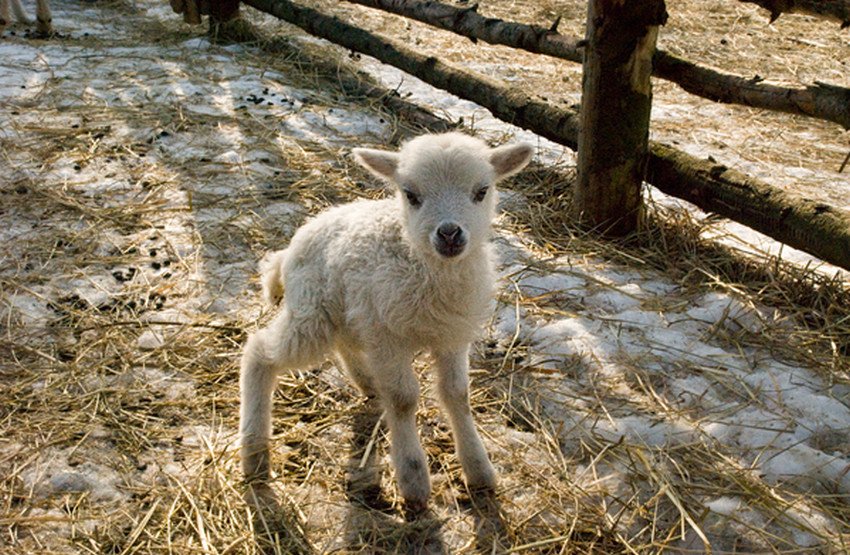 Poor weight gain in older lambs is often the cause of undernutrition in mother’s milk. The situation can be saved by separating the offspring from the uterus and transferring the young to high-quality “adult” food – fresh grass, hay, cake, vegetables, concentrates, etc.
Poor weight gain in older lambs is often the cause of undernutrition in mother’s milk. The situation can be saved by separating the offspring from the uterus and transferring the young to high-quality “adult” food – fresh grass, hay, cake, vegetables, concentrates, etc.
Separation of lambs from the uterus
It is necessary to separate the lambs from the uterus after the main source of nutrients for the body of the young is not mother’s milk, but other types of food.
The exact age at which this happens depends on many factors, including the health of the lambs, the time of year, the breed of sheep, and the conditions in which they are kept. For example, in the presence of free grazing and a large amount of fresh green fodder, lambs of 12–14 weeks of age can already compete with their mother for a “place in the sun”, and, therefore, it is time to translate them into separate content.
Raising lambs is an interesting and not very complicated process. Being naturally strong and hardy, sheep are able to be fruitful and multiply perfectly even without human help. However, domestication and subsequent selection work made certain adjustments to the original gene pool of these animals, therefore, in order to reduce losses among newborns and young animals, it is important for the farmer to comply with basic sanitary standards, provide lambs and ewes with good nutrition, provide them with the opportunity to free range, and also detect and prevent in time any signs of infections and other diseases in the herd.
